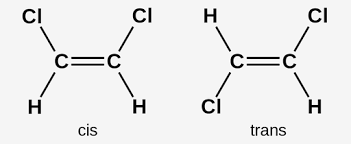A 45 year old man presents to your OPD with 1 month history of difficulty in breathing and cough.
On history taking you find out he had a pneumonia 2 months ago in his left lung which required intravenous antibiotics and hospital admission for 1 week.
There is no history of smoking and no blood in sputum.
On examination , he appears weak and distressed.
His Temperature is 37 C and respiratory rate is 22 / minute.
BP is 130 / 80 mmHg.
There is reduced chest expansion on left side.
On auscultation , air entry on left side of lung is reduced and a wheeze in expiration is audible.
Percussion reveals dull percussion notes.
Oxygen saturation is 87 percent.
You decide to organize a chest X ray which is given below :
1. What is the most likely Diagnosis ?
2. How will you mange this patient ?
Copyright reserved with Author.
Answers given in comments section.
1. What is the most likely Diagnosis ?
The chest x ray shows collapse of left lung . And there is a history of recent pneumonia as well.
This is highly suggestive of left sided atelectasis secondary to pneumonia or even a para pneumonic lung effusion.
An ultrasound of chest will better help determine the cause of lung collapse / atelectasis.
Atelectasis is a complete or partial collapse of the entire lung or area (lobe) of the lung. It occurs when the tiny air sacs (alveoli) within the lung become deflated or possibly filled with alveolar fluid.
Atelectasis may be caused by many things, including: Mucus plug, Foreign body,
Tumor inside the airway,Injury, Chest trauma ,Pleural effusion ,Pneumonia ,Pneumothorax and Scarring of lung tissue.
2. How will you mange this patient ?
Treatment of atelectasis depends on the cause. Mild atelectasis may go away without treatment. Sometimes, medications are used to loosen and thin mucus. If the condition is due to a blockage, surgery or other treatments may be needed.
Chest physiotherapy
Techniques that help patient breathe deeply to re-expand collapsed lung tissue are very important. .
They include:
Performing deep-breathing exercises (incentive spirometry) and using a device to assist with deep coughing may help remove secretions and increase lung volume.
Positioning the body so that your head is lower than the chest (postural drainage).
This allows mucus to drain better from the bottom of lungs.
Tapping on chest over the collapsed area to loosen mucus.
This technique is called percussion. Also mechanical mucus-clearance devices, such as an air-pulse vibrator vest or a hand-held instrument may be used.
Surgery
Removal of airway obstructions may be done by suctioning mucus or by bronchoscopy.
If a tumor is causing the atelectasis, treatment may involve removal or shrinkage of the tumor with surgery, with or without other cancer therapies (chemotherapy or radiation).
Continuous positive airway pressure (CPAP) may be helpful in some people who are too weak to cough and have low oxygen levels (hypoxemia).
Use Code
ZVN
at these websites for special discount at noon UAE and SAUDIA
https://www.noon.com/uae-en/
https://www.noon.com/saudi-ar/
Use Code
AE21
for websites below for special discountat underarmour uae and saudia
https://www.underarmour.ae/
https://www.underarmour.sa/
Use code
D1671
for discount at boots Arabia at websites below :
·
https://www.ae.boots.com/
·
https://www.sa.boots.com/en/
·
https://www.kw.boots.com/en/
https://bn.boots.com/en/
·
https://qt.boots.com/en/
Use Code
OU37
at websites below for Aldakheel
oud for discounts

























